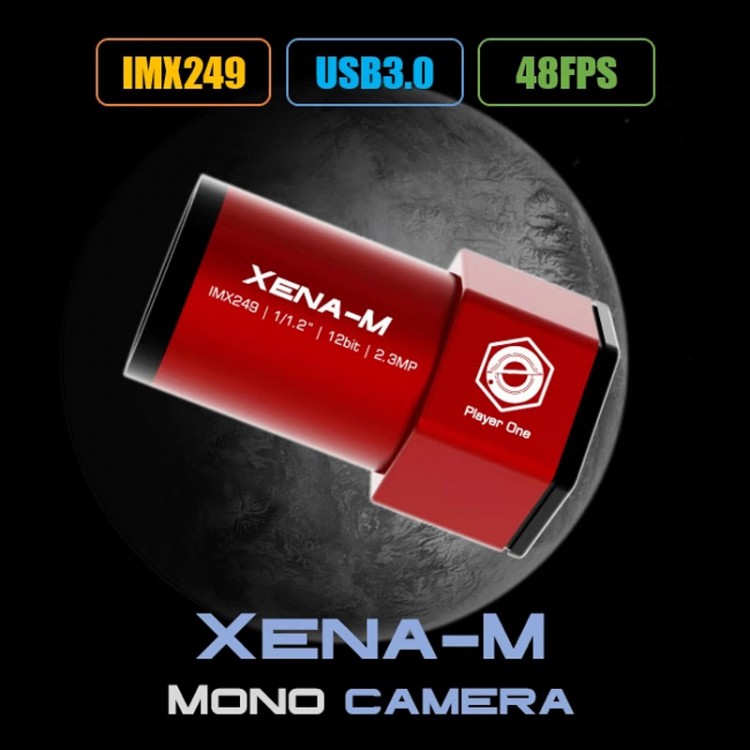
| Quantity | 3+ units | 10+ units | 30+ units | 50+ units | More |
|---|---|---|---|---|---|
| Price /Unit | $383.51 | $375.69 | $363.95 | $348.29 | Contact US |
 Mini Portable Adventurer Equatorial Mount 4.2KG High Load Capacity with 3D-printed Latitude Adjustment Base
$181.80
Mini Portable Adventurer Equatorial Mount 4.2KG High Load Capacity with 3D-printed Latitude Adjustment Base
$181.80
 Mini Portable Adventurer Equatorial Mount 4.2KG High Load Capacity with Gradienter and Compass
$120.83
Mini Portable Adventurer Equatorial Mount 4.2KG High Load Capacity with Gradienter and Compass
$120.83
 Black USB3.0 Astronomical Power Supply Management Box 2xDC Input and 6x DC Output Support Voltage/Current Display
$45.72
Black USB3.0 Astronomical Power Supply Management Box 2xDC Input and 6x DC Output Support Voltage/Current Display
$45.72
Player One Xena-M IMX249 2.3MP Mono Camera 48FPS Guiding Camera for OAG Guiding w/ Long Focal Length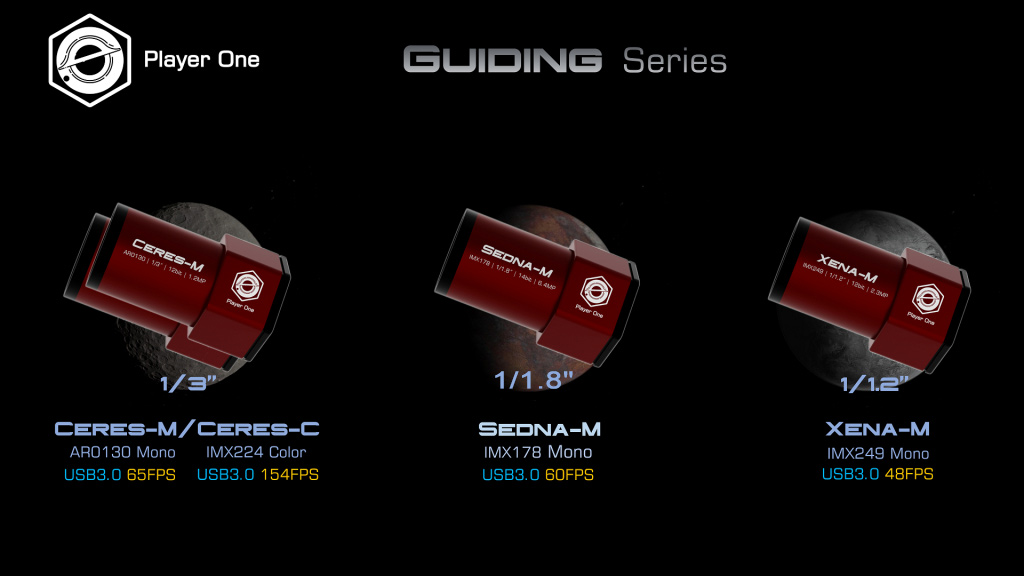
Player One Astronomy guiding camera series, AKA Dwarf Planet Series, is designed for guiding and imaging. This series includes 3 sub-series, namely Ceres, Sedna and Xena.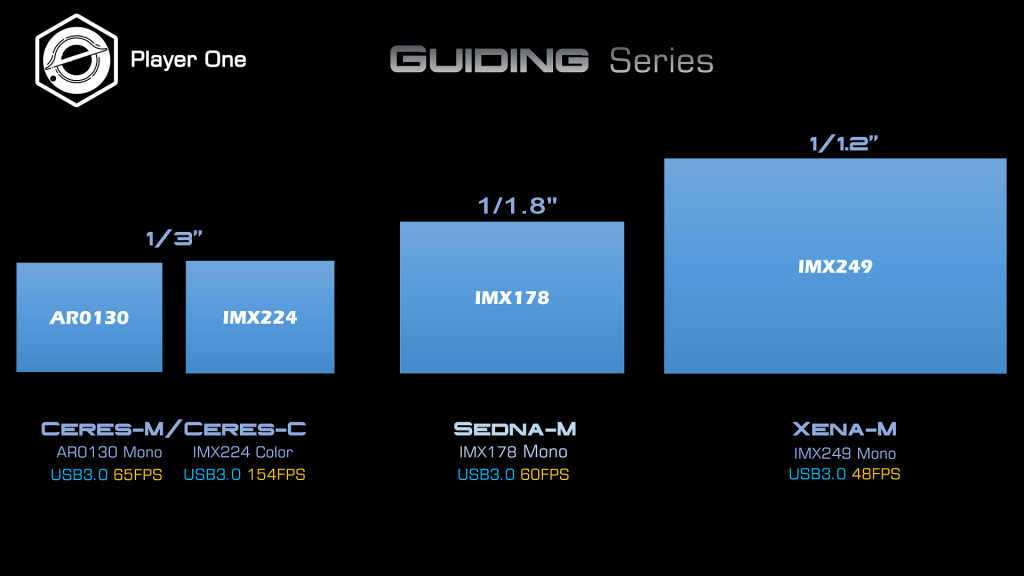
Product Description:
Xena-M is a guiding camera developed by Player One Astronomy. It adopts the IMX249 1/1.2" format sensor for Sony. The 5.86um pixel size accommodates a well depth of 32ke with a total of 2.3MP (the resolution is 1936*1216), and the diagonal is 13.3mm.
This IMX249 sensor has the same performance as IMX174 sensor. The transmission speed of IMX249 is 48fps.
Highlights:
Dwarf planet series is designed with a USB3.0 data port (500Mb/s), providing 10 times the speed of USB2.0. This camera series can be used for guiding and imaging. The diameter of Dwarf planet camera is 1.25". It can be inserted into the 1.25" interface of guiding scopes, making the whole set more compact.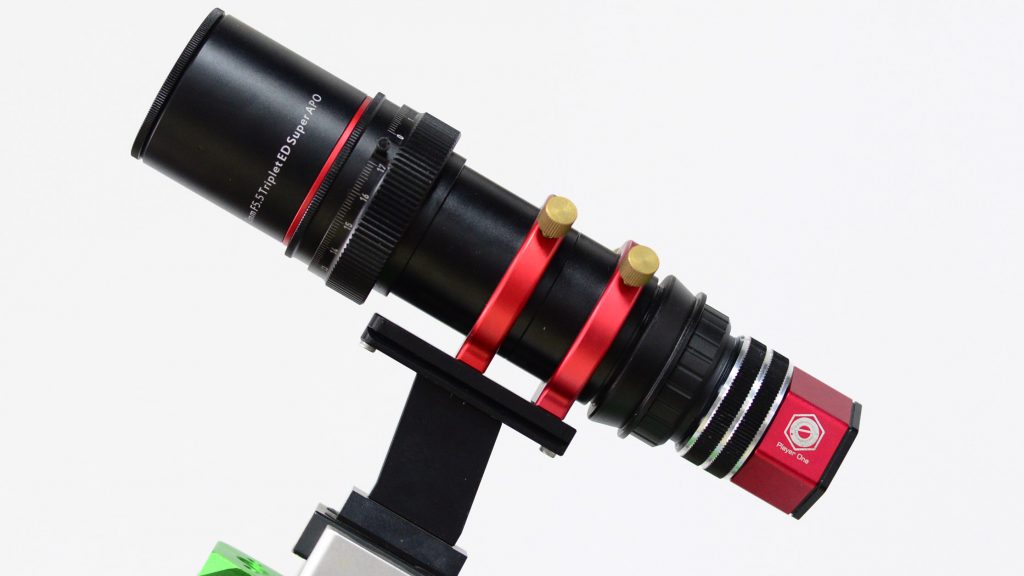
When used with a 5-100MM CS lens, the camera can also be used as a guider or a finder.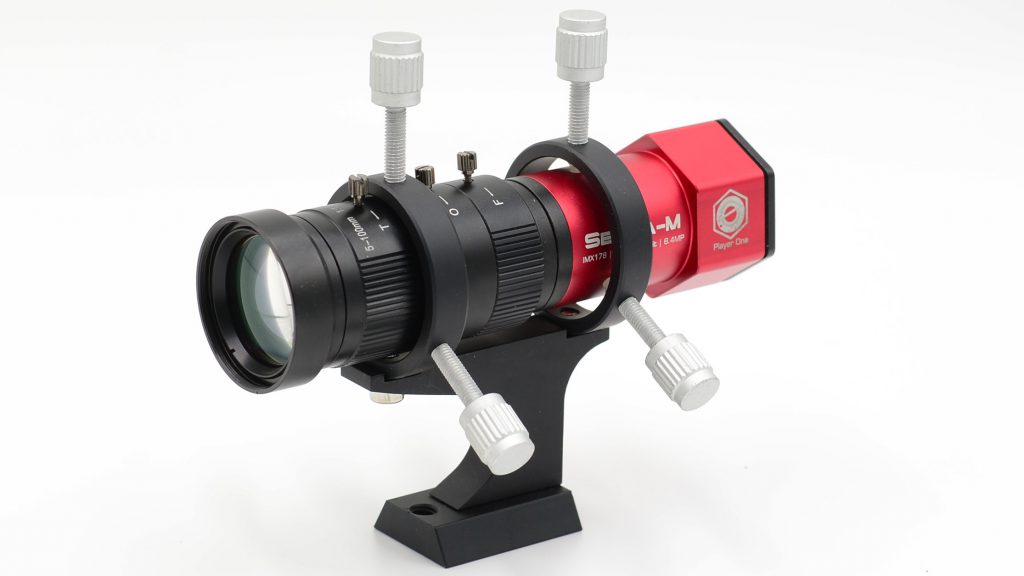
Features:
The naming of Player One guiding cameras is interesting. Guiding camera is smaller than planetary camera. This is the reason why we choose dwarf planet to name it.
The size of each dwarf planet to a certain extent represents the size of camera sensors. We will name Ceres with a 1/3" sensor camera, and for Xena, we will name it with a 1/1.2" sensor camera. All the names will be engraved on the housing of the cameras.
Download drivers and software: http://player-one-astronomy.com/service/software/
Download manuals: http://player-one-astronomy.com/service/manuals/
Cutting-edge Design
The guiding cameras developed by Player One Astronomy use technological regular hexagon to construct the main body line.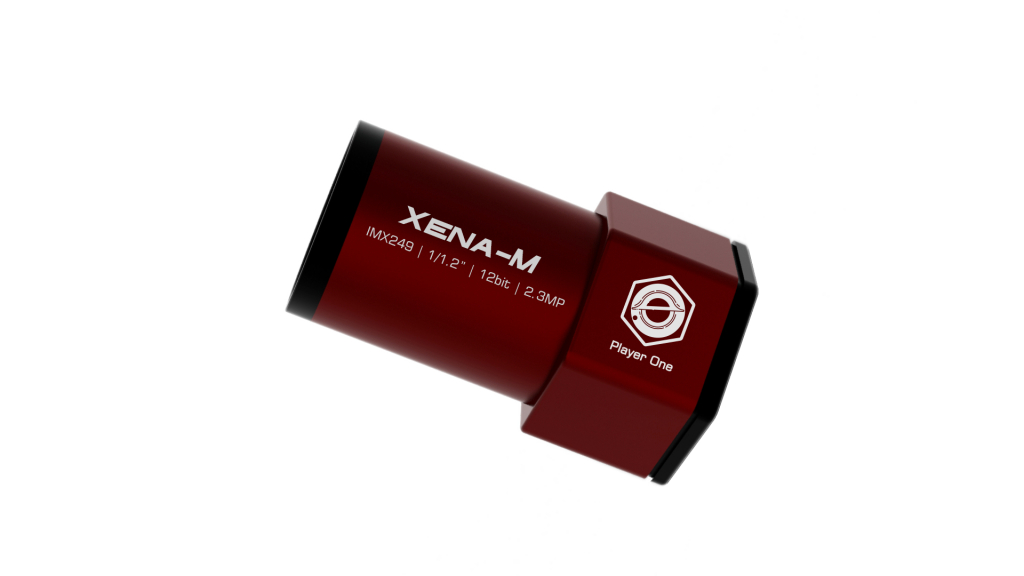
Nova Boosting Technology
Nova Boosting technology from Player One Astronomy is using hardware technology to overclock the frequency of sensor, then increase the FPS of the sensor. Official speed of IMX249 sensor on the website for Sony is 30FPS, and some cameras with IMX249 sensor only reach 22FPS. But with Nova Boosting technology, the Xena-M (IMX249) camera can reach 48FPS. NB technology makes Xena-M fast enough for solar, lunar and planetary imaging. This technology can also be used on our other cameras too.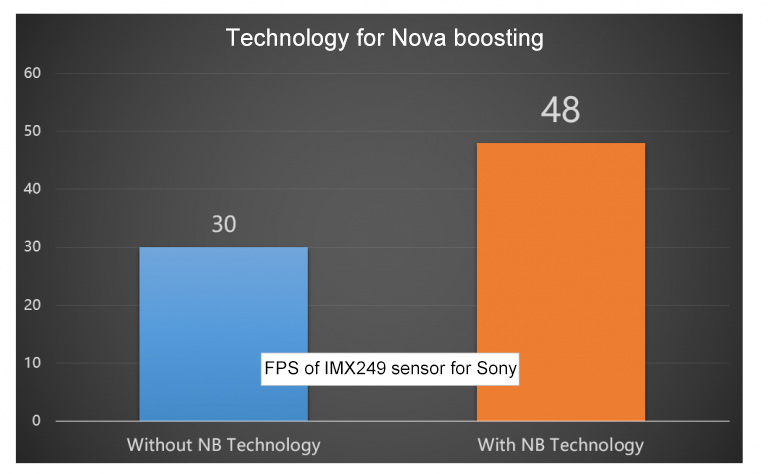
DPS Technology
The guiding cameras from Player One Astronomy have DPS (Dead Pixel Suppression) technology. The DPS can analyze many dark frames to find out those fixed abnormal pixels and record the map in camera memory. In imaging, each exposure frame and those positions of dead pixels will be given a median value according to the active pixels around the abnormal pixels.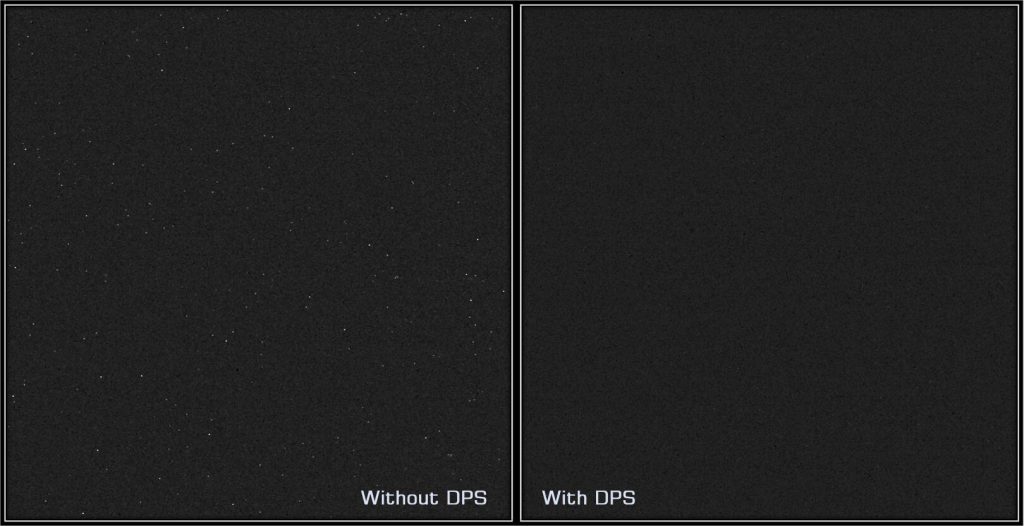
Over-voltage and Over-current Protection Mechanisms
Player One cameras ensure the safety of your camera and other equipment through over-voltage and over-current protection mechanisms.
Data Port
When the camera is connected to the USB3.0 interface and full-resolution preview is used, it can reach 48FPS in RAW8 mode (10bit ADC). For recording images, the actual writing speed will be affected by the writing speed of the hard disk itself. When the hard disk writing speed is slow, the recording may not reach the theoretical speed. It is recommended that you use a high-quality solid state drive to record data to give full play to the performance of the camera.
Use an ST4 guide cable to connect the camera and the AUTO GUIDE port of the equatorial mount to do guiding.
Performance: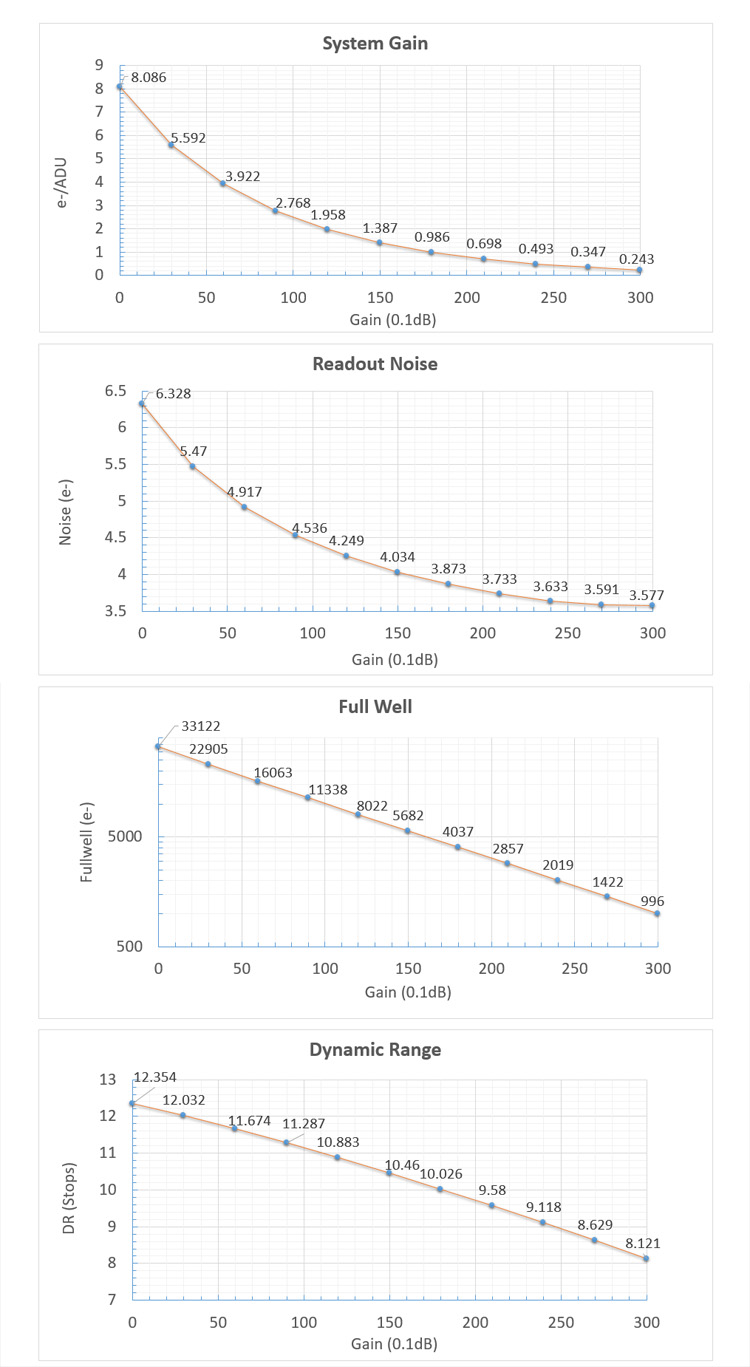
Readout Noise
Regarding readout noise, we solemnly promise that all values are obtained from actual tests. You can use the software for Sharpcap 4 for testing. SC4 has a function called Sensor Analysis, providing a very simple way to test readout noise.
We wrote a tutorial on website: https://player-one-astronomy.com/service/manuals/
After many rigorous readout noise tests, the Xena-M camera can reach a low readout noise of 3.57e at a gain of 350.
If you are interested in readout noise testing, you can try it by yourselves because it is very simple.
QE Curve
Xena-M camera has about 77% QE peak.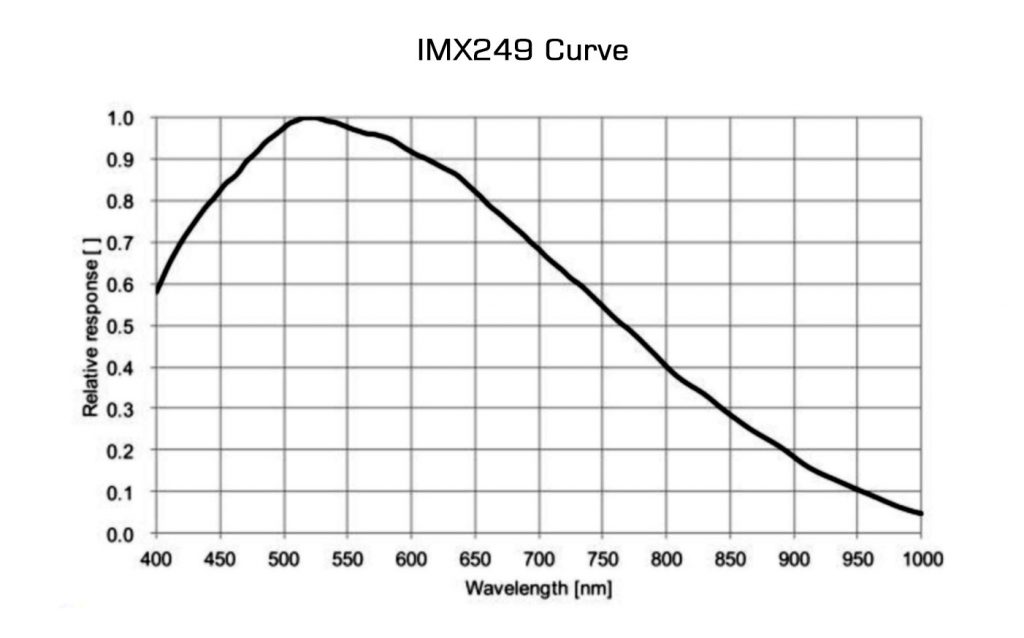
Mechanical Drawing: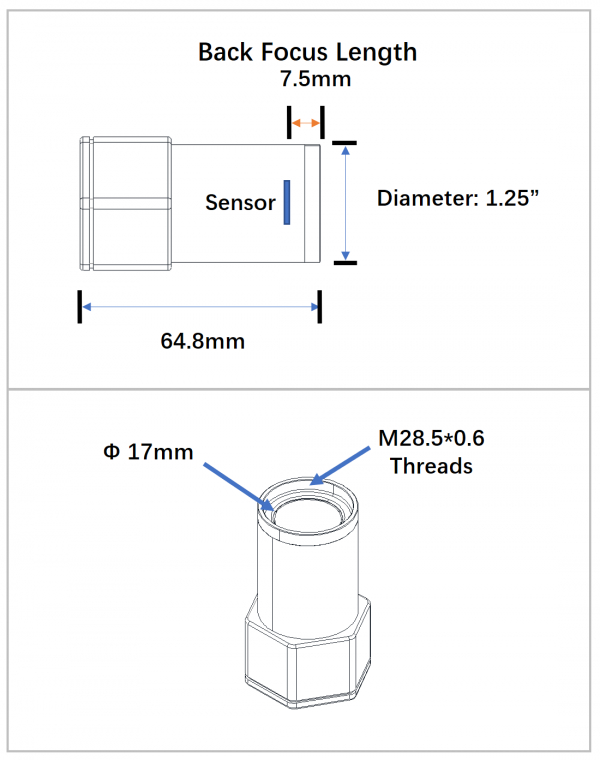
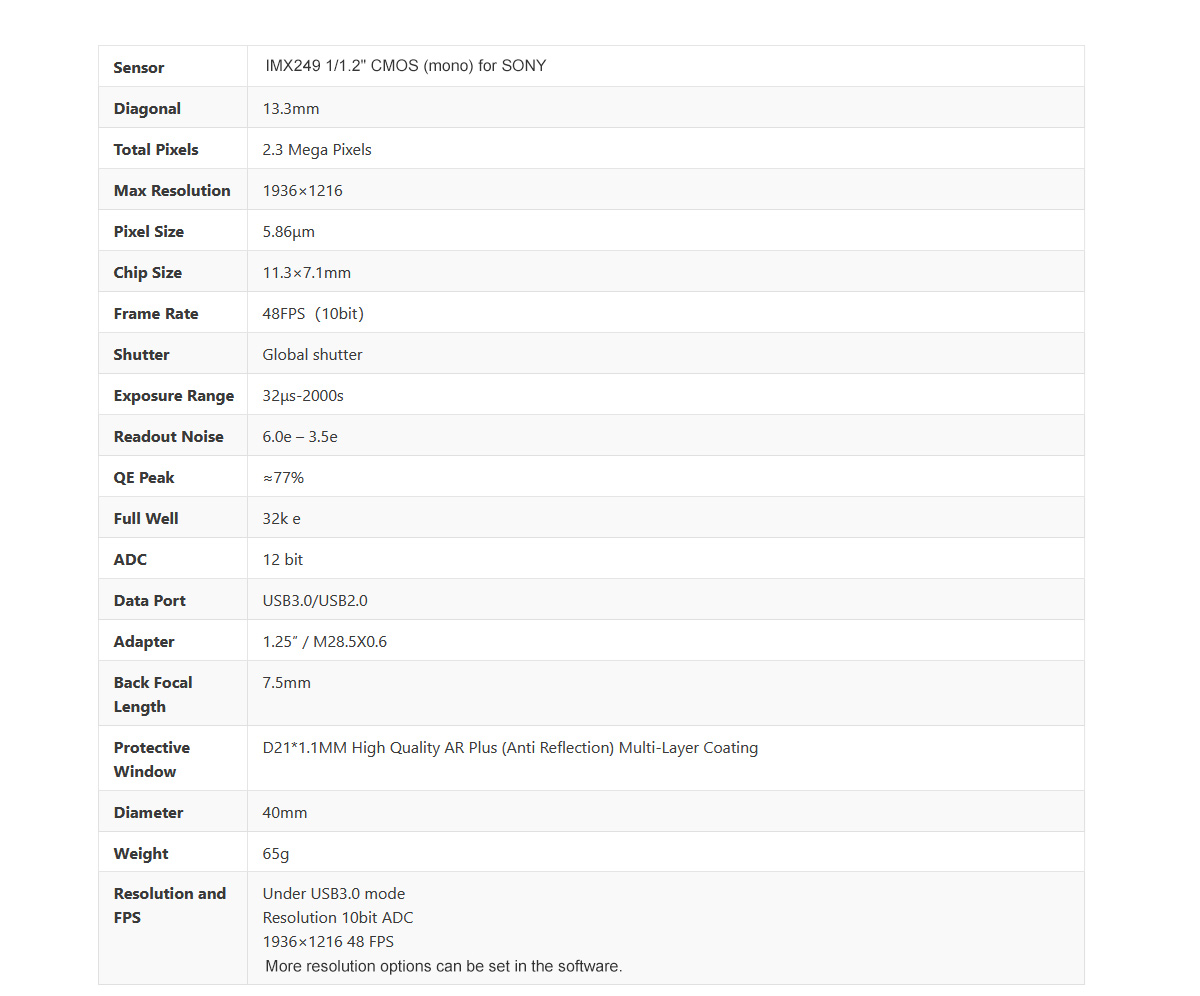
Package Included:
- 1 x Camera
- 1 x 2M USB3.0 cable
- 1 x 2M ST4 cable
- 1 x 1.25" extender
- 1 x 1.25" dust-proof cover
- 1 x Air blower
Packaging Details:
- G.W: 0.55kg